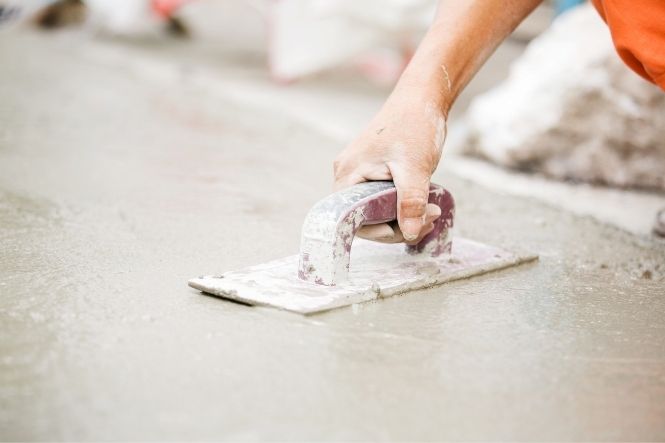If you’re making a drive yourself, the tools you need will depend to some extend on the type of driveway material you are using. And as a lot of the work is basic digging and foundation laying (see Excavating For A Driveway), before you get to the surface part, many of the tools used will be found in any competent DIY fan’s toolkit.
Remember that it’s a lot cheaper in the long run to buy good quality tools. Making a driveway is a lot of hard slog and your tools will take a lot of punishment. It might be great saving money on tools but when a vital piece of equipment breaks on Sunday morning you’re pretty much stuffed.
So, here are some of the most important tools for laying concrete:
Table of Contents
Spades and Shovels
The digging part will need spades and shovels. Make sure you have a wide square-edged spade for digging, preferably with reinforced shoulders on top of the blade to take the pressure of your boot. For moving dirt, and then shovelling gravel and sand later on, a wide blade shovel with raised sides will be a godsend, although you can of course make do with your spade.
There are many more specialist tools, like narrow-blade trenching tools and wide shovels, but most driveways can be made with a couple of ordinary ones. Just make sure you keep them sharp.
Hammers, Mallets and Pickaxes
This is the hard end of the tool spectrum, but delicacy is required in some circumstances. A pickaxe will make quick work of an old drive surface. Get one with a point on one side and a blade at the other because the blade end can be used to lever up paving stones, large rocks and tree roots.
Heavyweight sledge hammers and club (or lump) hammers will help to break up stone, concrete and rubble. They are also used to cut thick paving slabs, bricks and kerb stones to size once they have been scored along the cut line.
Unsurprisingly, heavy mallets are used to pound long and short wooden stakes into the ground when marking out a new driveway.
Plastic Mallets are invaluable for tapping posts and other hard-to-reach areas when making a concrete formwork or just knocking down any loose concrete that might be forming in cracks or crevices.
The mallet is where the delicacy comes in. Historically made with a head of wood, leather (aka hide) and then rubber, today they are often made of silicon rubber, although the older ones are still available. But the basic concept is the same: to have a decent weight behind them but with a material that is less likely to damage the paving material. In fact, a mallet is also used to drive chisels and other tools with cutting edges into the surface of the pavement to prise it up.
Mallets are also crucial when laying paving slabs. Although you can use a large sledge hammer for this, they can damage your slabs which will not only look bad but will also reduce the life of your drive. A mallet will prevent this happening.
Cold Chisels and Bolsters
For chipping off fine shards of paving material or splitting blocks, the cold chisel or bolster comes into play. A cold chisel is similar to a wood chisel but larger and completely made of metal so that it can take a lot of punishment. A very wide cold chisel is called a bolster and used for cutting along paving stones or cutting channels in concrete.
Trowels
When it comes to Laying A Concrete Drive, whether it’s for the driveway itself or as part of the foundations, having the right trowel will make the job so much easier. A basic trowel can be used to put concrete onto flags and blocks before laying them. It can also be used to finish off the edges of concrete slabs.
An ordinary trowel can be used for pointing but a proper pointing trowel, smaller and with a rounded nose rather than a point, will make a better and faster job of pointing. For smoothing off large expanses of cement a large square trowel known as a float is used.
Spirit Levels
Finally you’ll need at least one decent spirit level to make sure you’re finish is nice and flat but, more crucially, that the correct fall is in place. This will encourage water to run off the driveway instead of forming puddles and shortening the life of the drive.
A short spirit level is useful for checking levels of individual slabs or blocks but the really useful tool is a long spirit level, at least three or four feet long. This can be placed across a number of blocks or flags to check that they are flat (and no, that’s not necessarily the same as level!). It can also be fixed to a longer batten and used to check for levels right across a driveway.
Of course, there are many more specialist tools that will make constructing a driveway easier and faster but these basics should be enough to get by.
Conclusion
In conclusion , there are many things you should take into consideration when constructing a new concrete driveway. You need to understand what type of tools and equipment are needed for laying a Concrete Driveway, how to make the best use of them if you want to do this job right. However , if you decide to do it on your own, you must be prepared for the many challenges and difficulties. We hope you will find all the information on this blog helpful in learning more about how to build a concrete driveway by yourself.

